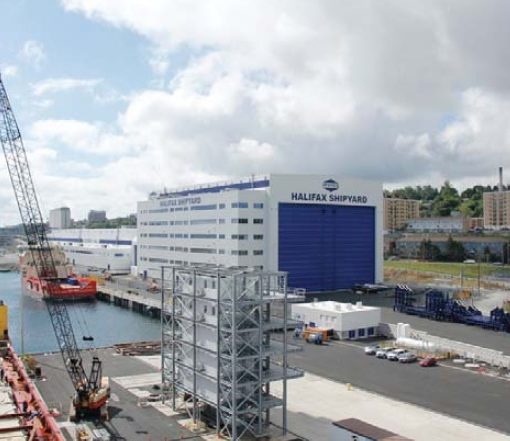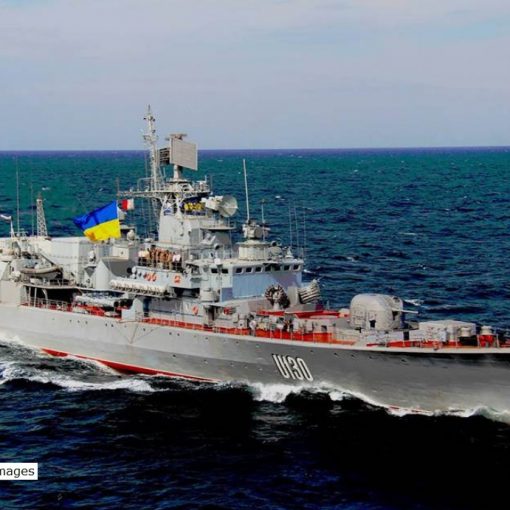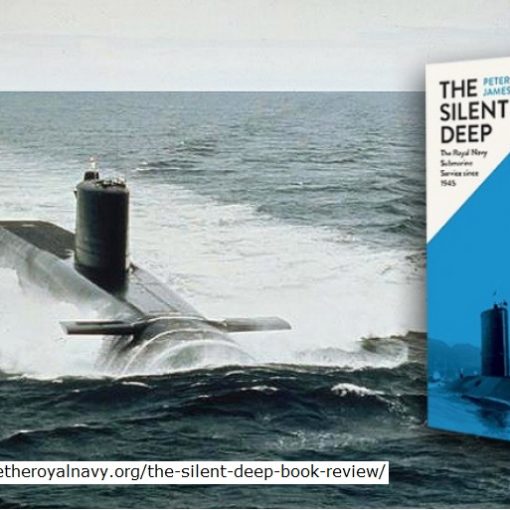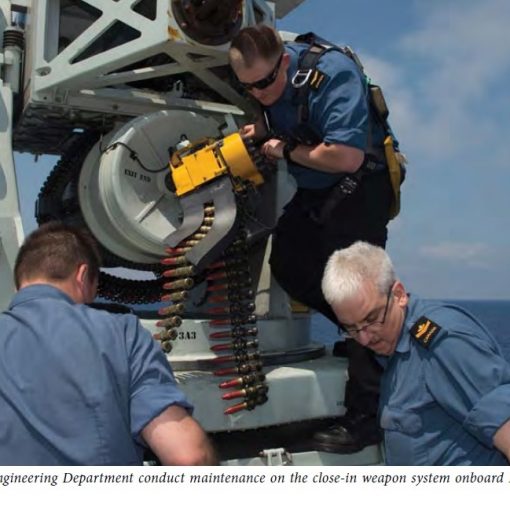Energy Use and Conservation in the Marine Sector
Environmentalists are making a lot of noise these days about getting off oil in the next two to three decades. This might seem like a great idea until looked at carefully from a practical perspective. Sure, we could build more energy-efficient buildings and electrify the railroads, but what would happen to the rest of the transportation industry in Canada under such a concept? For instance, a complete or even partial lack of fossil fuels in the marine sector would cause absolute havoc. The inescapable fact is that the marine sector depends on the internal combustion engine. As I will explain, the extent of this dependence is sufficiently great to be a major factor in the national economy. Affordable alternatives to internal combustion engines at sea just do not exist at the moment. I suppose we could return to an era of sailing ships, but what would that do to a manufacturing industry structured on a just-in-time logistics concept? Chaos! How would we maintain the export market for fish without refrigeration? And how would the essential network of ferries be sustained? Could we afford to rebuild the national fleets of ferries to run on nuclear energy or even fuel cells? All valid questions that should be included in any future proposal for getting off oil.
Policy-makers and their critics from central Canada have a nasty habit of ignoring the marine sector and its role in the national economy. This isn't new, it goes back for well over 100 years despite the fact that the sea played and continues to play an essential role in the development of the country. Geographic and economic data should speak for themselves. One would think that by now that the Canadian population would accept not only the magnitude of the ocean areas over which sovereignty is claimed but also that those waters are directly and indirectly the source of great wealth. Ignore the oceans at your peril!
Surprisingly, good statistics on Canadian ocean use are now hard to find. The government no longer collects and analyses the amount of marine data as in the past, and the few analyses that are published are shallow in the extreme. But, by delving into some private sector reports and analyses, a pretty good picture of the Canadian marine sector can be found. It just takes a little effort.
The Canadian Marine Sector
We tend to speak of a Marine Sector in a unitary sense, whereas in reality, it is multi-faceted. I'll summarize five of the most obvious areas to provide an overview of the national economic and employment implications. Unfortunately, space does not permit mention of the very important R&D activities or the considerable ferry network connecting island and isolated communities with the rest of the country.
Also, I hope to make it clear that the common denominator throughout is the internal combustion engine, with some reliance on gas-turbines. That done, I'll talk a bit about realistic alternatives for marine propulsion systems and show that getting off oil at sea will be very expensive and will take a great deal longer to implement than the two to three decades being touted. In fact, taking such a step is more akin to initiating an industrial revolution than a simplistic environmental policy shift.
(1) Trade by sea, coastwise and international, is a key component of our economy. Somewhere in the vicinity of 315,000 tonnes of cargo, worth some $500 billion, are loaded and unloaded in Canadian ports every year. In turn, this generates nearly $200 million in operating income and leads to about a quarter of a million jobs. Most of the vessels engaged in seaborne trade are internationally owned and operated; the small Canadian merchant marine is almost entirely engaged in domestic trade and local transportation. Shipping adds $25 billion annually to the national GDP. An important and often overlooked point here is that many of the foreign merchant ships using Canadian ports, refuel and re-provision there. Getting off oil would almost certainly impact the freedom of use of those ports, with considerable economic consequences.
(2) Resource exploitation, mainly the fishery and offshore oil and gas, employs some 83,000 people including those in the shore-based support operations. Off-shore oil and gas operations provide some $60 million annually to R&D and pump over $2.0 billion in revenue to provincial governments. I could not find a figure for the number of vessels involved in the oil and gas industry, but over 18,000 vessels form the backbone of the inshore and deep ocean fisheries. The economic value to Canada of the fishery is $7.8 billion.
(3) The recreational use of the oceans and inland waters by Canadian is extensive. Here again, the data are scarce, but some 4.3 million small vessels are registered for recreational use, but there is no easy way of telling how many of those vessels do not have an engine, but probably do. With the support infrastructure, recreational use of Canadian waters is estimated to add about $5.0 billion to the economy every year.
(4) The shore-based infrastructure to support these marine activities is, as one would expect, very large and diverse; covering shipbuilding and repair, logistics, management and maintenance of ports and waterways, cargo handling, and the necessary administration to make it all function. Statistics covering the full economic value of this aspect of the Canadian marine sector are impossible to find, but several hundred thousand people are employed in all aspects of this activity. I could not find a figure to tell me just how many tugs, barges, and small boats support this infrastructure, but anyone who has ever watched port or shipyard operations appreciate that they bustle with activity.
(5) Without a comprehensive system of regulations and the means of enforcement, any marine sector would be complete chaos. Although many of the related activities are shore-based, a significant number of ships and people carry out this work on the water. The Canadian Coast Guard, the primary law enforcement arm of government, for instance, maintains 119 vessels, 22 helicopters, and employs over 4,500 people.
In summary, the marine sector in Canada employs thousands of people from coast to coast as well as in the North and on the inland waterways. The value to the economy is billions a year. In all, some 50,000 or so ships and smaller vessels use virtually all parts of Canadas vast oceans and inland waters for many reasons and, with few exceptions, they all use some form of an internal combustion engine for propulsion or to generate electricity. It is perfectly fair to claim that without the internal combustion engine and fossil fuel, the Canadian maritime sector would collapse and in the process do immeasurable damage to the economy.
Alternative Fuels and Means of Propulsion
At present, transportation accounts for roughly 39 percent of all Canadian energy consumption; this includes aviation, road, and rail as well as the marine sector. Nearly all of that amount is fossil fuel. Assuming that somewhere between one-third and a half of that energy is used by the internal combustion engines of the marine sector, ridding the economy of fossil fuels or even attempting to reduce consumption presents a huge challenge. Let's look at some options.
(1) Shifting to biomass-based fuels or cleaner variants of fossil fuels is theoretically possible but those fuels still produce carbon emissions albeit at a lower level. Although biodiesel holds promise as an efficient fuel for transportation having about 93 percent of the power derived from traditional diesel fuels, serious concerns exist over its sustainability as a major fuel because of the amount of biomass needed to create the fuel. Recent American studies for instance place the biomass requirements in thousands of acres. This is accompanied by calls for far larger crop yields per acre. Moreover, there is a not insignificant need for energy in its production, a fact which sometimes gets overlooked.
(2) Fuel Cells are essentially chemical batteries and have been used for several purposes from driving buses to providing emergency electrical power. Iceland and The Netherlands are now using fuel cells to power small boats and Iceland has plans to shift its fishing fleet to this power source. Several submarines are using fuel cells to augment their diesel-electric propulsion to get greater underwater endurance. The cells are quite expensive and fairly bulky, but with some limitations can be retro-fitted into existing hulls. Individual cells can be stacked to provide a larger power potential; an upper limit to which has not yet been established. Fuel cells are not easily refuelled, and the production and storage of hydrogen, essential for the operation of the present generation of fuel cells, can be problematic.
(3) For larger ships naval and merchant nuclear power offers the most logical solution to getting off oil especially as Canada already has a small nuclear industry. As with fuel cells, the key factor is to determine the amount of power needed. For instance, a modern, large container ship or the largest of the Marine Atlantic ferries have shaft horsepower ratings (SHP) of 75,000 to 80,000. The electrical power needed to propel and provide domestic power for those vessels is about 70 megawatts (MW). The Russian nuclear-powered icebreaker, Yamal, has an SHP rating of 75,000 developed by two 56MW reactors. (For cross-reference, a wind turbine develops 2-3 MW depending on wind strength, and one MW will supply power for about 200 homes). A fourth generation Westinghouse reactor generates 550 MW; a modern aircraft carrier has two such reactors. Small commercial reactors developing 25 to 100 MW are being developed in many countries; these would produce enough power to drive medium-sized cargo ships and ferries. Once past the nuclear allergy the problem with nuclear power is cost and the need to develop a very large support infrastructure.
Conclusion
I have shown that getting off oil in Canadas maritime sector would be a very major undertaking that needs to be carefully planned in order not to disrupt the national economy. It would be, in fact, a national project that could take several decades to implement fully. There is no single solution to solving the perceived oil problem: a lot of new ships embodying new technologies will have to be built to replace existing hulls. It makes sense to use nuclear power for warships, submarines, in particular, icebreakers, the large Coast Guard vessels, northern supply vessels, and probably most of the Marine Atlantic fleet. Fuel cell technology is certainly promising and could well offer a solution for the smaller commercial vessels, harbour tugs, and smaller ferries. Biofuels, once the sustainability issue is solved, could well become the primary fuel for small fishing vessels and the bulk of the recreational fleet, but there is a lot of preparatory work to be done before this can become a reality.
The call to get off oil should be seen as an opportunity to move Canada to world-class status in the management of the marine sector. It will not be cheap, and will have to be accompanied by a significant public education initiative to overcome opposition to the new technologies. One has to wonder though if any government, present or future, will have the courage to embark on such a huge modernization initiative.
Peter Haydon
Bedford, NS,
July 2016





